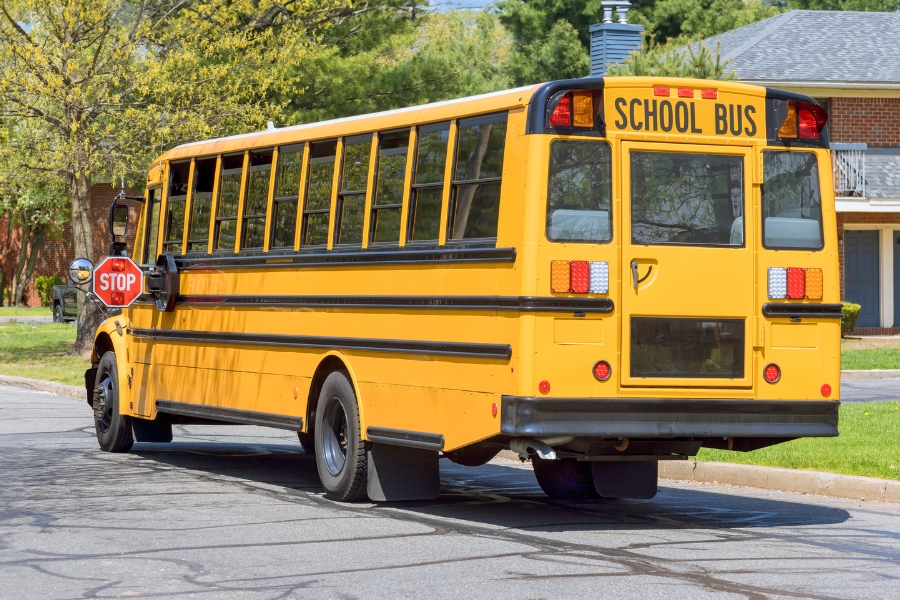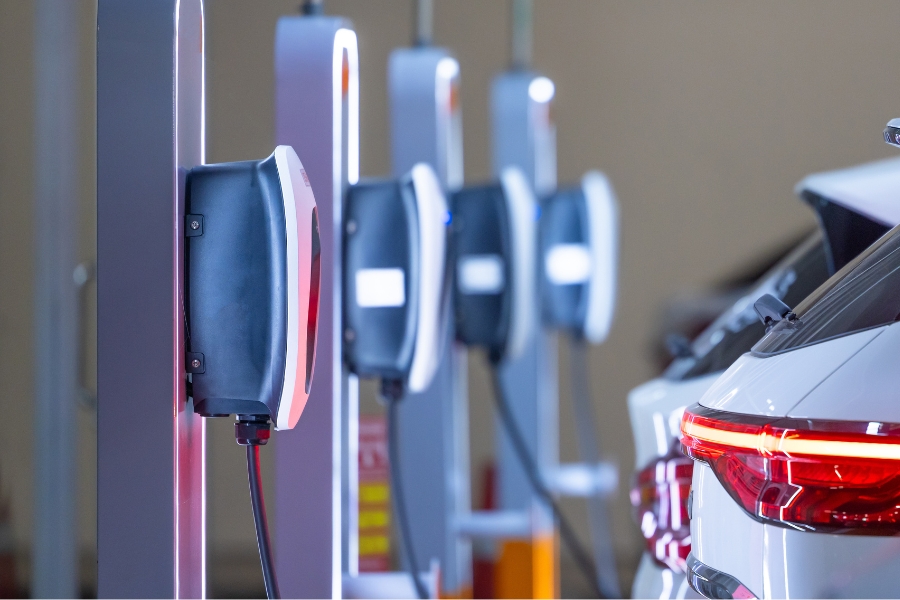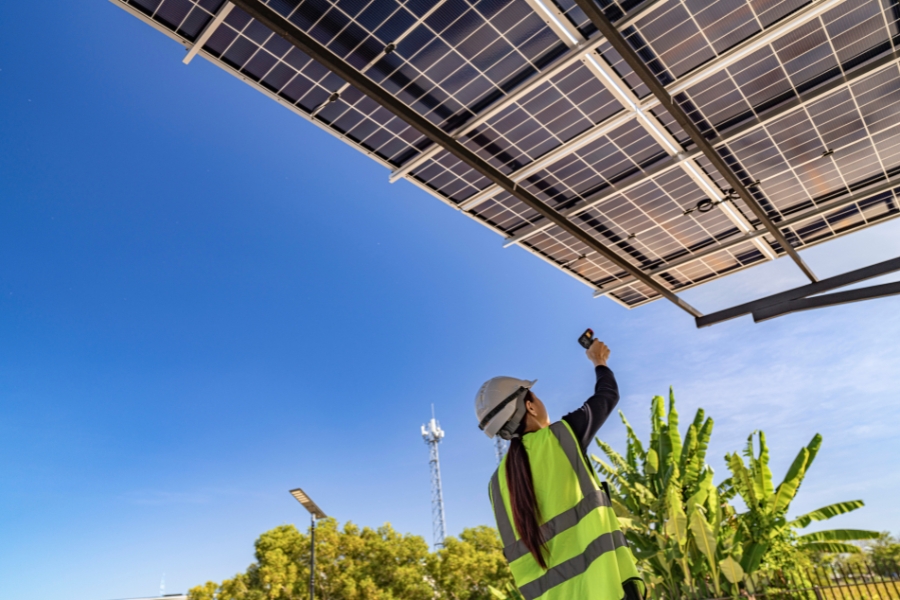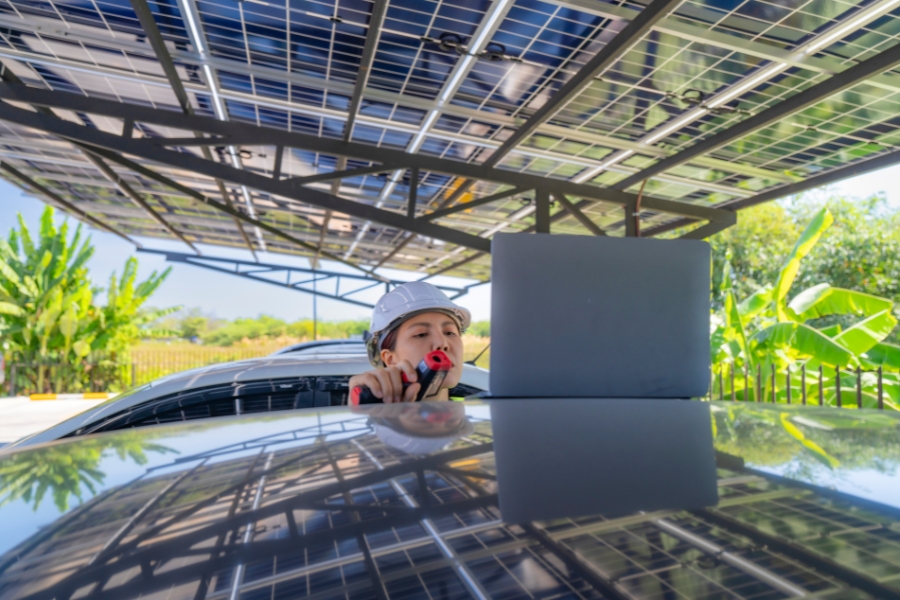Solar energy isn’t just for rooftops or homes; it’s now powering buses, bus stops, and even local transit projects. This innovation is cutting pollution and improving daily commutes in the bustling core of the city. Solar for public transportation is reshaping the way New Yorkers move around, and it’s time to get excited about being a part of it.
Let’s take a closer look at the current projects supporting this initiative, what this means for the future of public transportation, and its benefits and challenges for the citizens of NYC.
5 Ways Solar Panels Are Powering Your Commute
While the state is working on increasing solar panel installation in New York City in homes and businesses, it’s inspiring to see how it’s become a part of other everyday processes. While the number starts at 5, we definitely see an opportunity to incorporate solar panels into our lives.
1. Solar-Powered School Buses: Cleaner Air for Students
Some school buses in Brooklyn now have solar panels on their roofs. These panels charge the buses’ batteries while parked or driving, and extra energy can even feed back into the local grid!
Why it matters: Diesel buses release carbon dioxide and tiny particles that harm air quality. With the new solar panel upgrades, these buses reduce pollution and save fuel costs. Over a year, a single solar-powered vehicle can cut hundreds of pounds of CO₂ emissions. This directly improves student health and neighborhood air quality!

2. Charging Electric Buses with Sunlight
The Metropolitan Transportation Authority is working to convert its bus fleet to zero-emission vehicles by 2040. Rooftop solar panels on depots and parking lots will help charge these buses so that they don’t have to rely on fossil-fuel electricity.
Solar energy here is not only environmentally friendly but also cost-effective. Sunlight essentially becomes fuel for buses, so it helps cut energy bills while keeping transit reliable and environmentally friendly.
3. Solar-Powered Charging Stations: Fueling the Future
Charging stations powered by solar panels are being installed around the city. Not only does this power public vehicles, but also personal vehicles like electric cars. Sunlight is collected and stored in batteries, ready to recharge electric vehicles when its needed.
The benefits of these charging stations include lower greenhouse gas emissions, reduced energy demand from the grid, and a more stable, reliable transit system.

4. Smart Bus Shelters: Practical and Eco-Friendly
Some bus shelters now use solar panels to power LED lights and digital displays showing real-time bus arrivals.
These shelters improve safety, convenience, and accessibility while reducing electricity consumption. Solar-powered shelters make everyday transit more reliable and demonstrate how even small installations can have a big impact.
5. Community Solar Projects: Local Transit Powered by the Sun
Neighborhoods are getting involved too! State programs fund local initiatives like solar-powered shuttles or shared electric vehicle hubs.
These projects make transit more accessible and allow residents to see the benefits of clean energy firsthand. Solar for public transportation can work at all scales, from city-wide fleets to local neighborhood routes, helping everyone move around more sustainably.
How Solar Public Transportation Benefits Other Sectors
While environmental is one of the aspects this solution floods into, the river also trickles into other categories of state interest. Here’s a quick look at the economic, social, technological, and environmental benefits of solar for public transportation:
| Category | Benefits of Solar for Public Transportation |
| Economic |
|
| Social |
|
| Environmental |
|
| Technological |
|
Not only is this advancement great for the environment, but we can also see how it positively impacts other sectors as well!
Challenges and Limitations of Solar for Public Transportation
Since solar transit is newer, especially for public vehicles, it has some limitations:
- Weather dependency: Panels work best in sunny conditions; efficiency drops in cloudy or snowy weather.
- Storage limits: Batteries can only hold so much energy, requiring backup power in some cases.
- Upfront investment: Installing panels and retrofitting buses or shelters requires money, though long-term savings are significant.
- Space constraints: Urban areas may not have enough room for all the panels needed for large fleets.
Despite these challenges, constant technological improvements are making solar for public transportation increasingly practical. This is especially true for New York since its a commuter-friendly state.

A Brighter Future for NYC Transit
The city plans to expand solar-powered buses, charging stations, and smart shelters even further. As technology improves, solar for public transportation will become more usable in general and hopefully achieve a longer reach to other vehicles.
